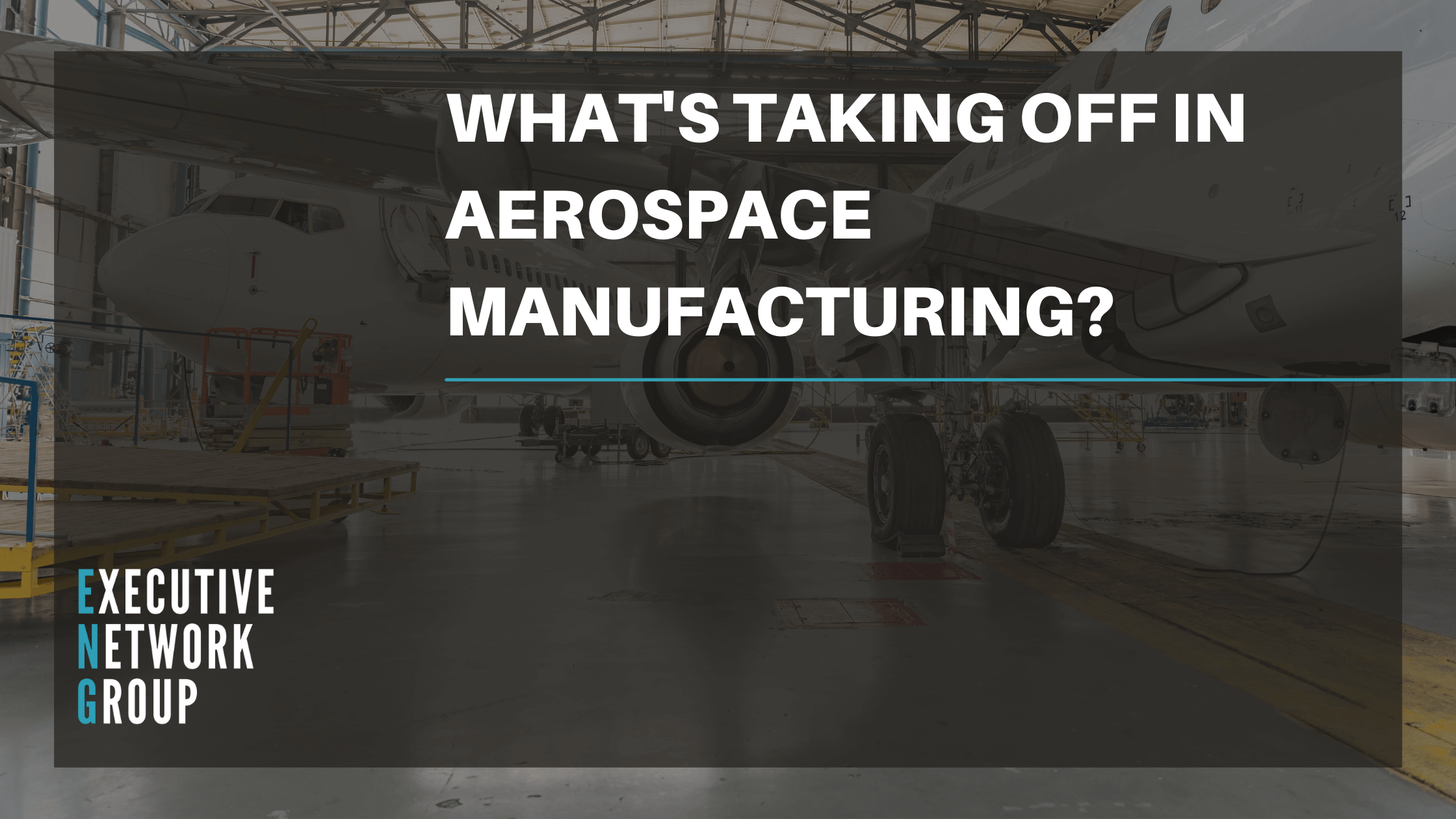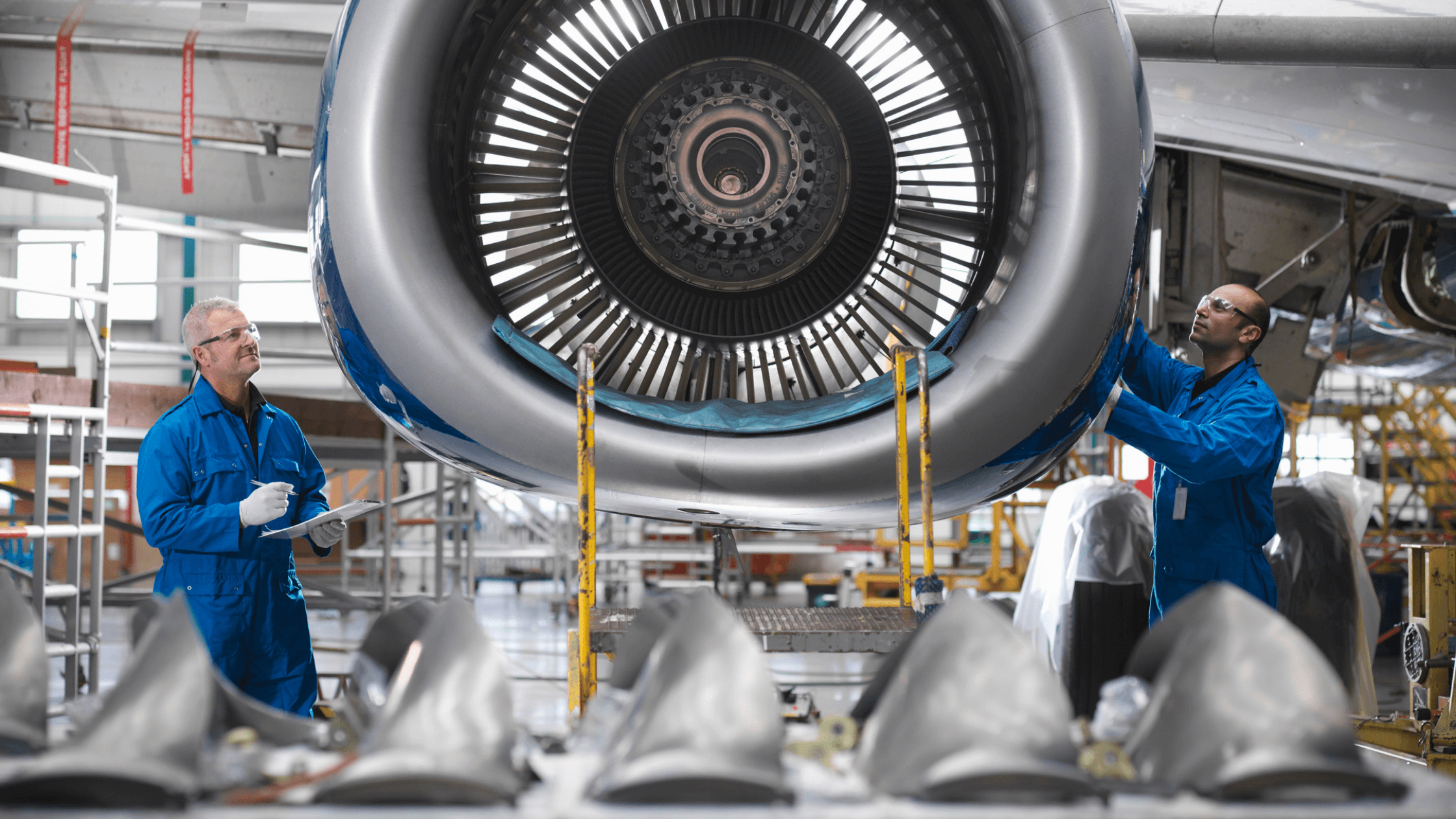What's Taking Off in Aerospace Manufacturing?

In this blog we'll be exploring the latest innovations from the world of aerospace manufacturing and the trends that will be at the forefront of the sector going into 2022.
Electric Aircrafts
The incorporation of electric aircraft has been highlighted as an innovative way to combat global warming and reduce CO2 Emissions.While this is a highly complex initiative and cannot be done in one fell swoop. The industry looks to partner older materials with newer ones. Slowly phasing out old, outdated technology with updated iterations. This is with the hope that will improve the safety of flights and the performance of the aircraft.
“Electrified Automation has developed technology that automates coil-winding, magnet placement and production test equipment, which can be used across several different types of aircraft, including unmanned and commercial aircraft. The company says its technology is providing automation solutions for customers that significantly improve their manufacturing process, boosting productivity on a massive scale”. – Innovation Origins.
Courier services such as DHL have bought into the electric aerospace market by purchasing 12 electric aircraft from Eviation, an Israeli-American company. They hope that those planes will be operational from 2024.
Going down to Net Zero
Like many other sectors, the aerospace manufacturing sector has declared its intention to go to Net Zero, although this is not an easy task in this industry.
“Aviation is a complicated sector to decarbonise. It has some prickly ingredients: difficult technological solutions, hidden extra climate effects, an association with personal freedoms and a disproportionately wealthy and powerful customer base”. – The Guardian.
The sector has pledged to achieve Net-Zero by 2050, so they have a lot of time to get things right, but there are many factors to take into consideration.
We’ve spoken before about electric aircraft, this will be a big initiative to achieve Net-Zero as they are much more sustainable than fuel aircraft.
“Even before the crisis, there was growing pressure on the aviation industry to become more sustainable, particularly with regard to reducing CO2 emissions. Accordingly, the OEMs and engine manufacturers had already launched programmes to develop lower-consumption aircraft and engines, to experiment with new fuels and to enter into electric flying.” – PWC.

Additive Manufacturing (3D Printing)
First of all, what exactly is additive manufacturing?
Additive manufacturing is essentially 3D printing. According to GE.com, its “a transformative approach to industrial production that enables the creation of lighter, stronger parts and systems”.
It has been known to be used for parts that use less material than more traditional manufactured parts – in the hope that it will achieve better performance even though it consists of fewer components.
This means it’s an extremely attractive alternative for both the aviation and aerospace manufacturing.
“In one aviation and aerospace application after another, 3D-printed, lightweight products lead to energy savings, reduced carbon emissions and enhanced return on investment”.
Although, additive manufacturing is not without its challenges. For example, there are size limitations with 3D printed parts which may cause issues. There may also be quality challenges that must be overcome. According to Satair – “At the moment, additive manufacturing faces certain challenges with quality consistency, especially in producing fully dense metal parts”.
Autonomous Flight Systems
While autopilot is a very common system in the aerospace industry, pilots will always be on hand in the cockpit to oversee the autopilot and eventually take over from it. Automation would be completely different.
Autonomy in the aerospace industry would bring in aircraft that would not be human-piloted. Directed and controlled by systems, rather than human hands.
Why would we want aircraft’s controlled by computers rather than pilots?
“Cost savings can be substantial if no pilots would be needed and ATM could be fully automated. Passengers can be served by robots on board so no cabin crew is needed in future. (With adaptation of safety requirements)”. – Aerospace Europe
We do already have autonomous flight systems in place in drones, however we are yet to see any on large aircraft.
As great and as futuristic as this sounds, it comes with a huge caveat. A huge elephant in the room.
Job losses would be substantial if we are peeking into the future of air travel.
According to the European Cockpit Association (ECA), the introduction of autonomous flight systems would cause thousands of pilots, who have already been hit hard due to the Covid19 Pandemic, to face unemployment.
“At the same time, directly employed pilots are on various furlough schemes and part-time arrangements or (forced) unpaid leave. With many of those schemes about to end but still very few aircraft in the air, airlines will start laying off staff on a massive scale: 12.000 jobs at British Airways are at risk, 10.000 at Lufthansa, 7.000 SAS, 4.000+ Norwegian, 3.000+ Virgin Atlantic, 3.000 Ryanair, 1.000 Wizzair. Thousands of pilots more will soon join the ranks of Europe’s unemployed”.
The Strain on the Supply Chain
Supply chain issues have plagued many industries as the Covid19 pandemic had brought economic supply lines to their knees. Now almost 2 years later – these issues persist, even though we slowly start to crawl out of the pandemic.
“The rapid spread of the virus in 2020 prompted shutdowns of industries around the world and, while most of us were in lockdown, there was lower consumer demand and reduced industrial activity”. - CNBC
MRO (Maintenance, Repair, Overhaul) will be a huge task now the aerospace industry opens back up again with people now taking regular commercial flights again, but this also breeds supply issues.
“One of the major aviation supply chains challenges that the panel sat down to discuss was whether or not MROs and the affiliated aviation supply chain are ready to handle the expected increase in volume. Across the panel, keywords in this discussion seemed to be collaboration and used serviceable material (USM).” - Satair
Unfortunately, it seems this problem will continue to hang around. With price inflations of freight shipping and the supply bottlenecking issues – The strain to supply chains may not be going away any time soon.

